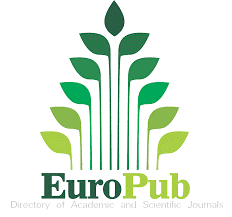Preliminary evaluation of floristic composition and vegetation uses in secondary forests, Azuay province
Keywords:
Andes, Azuay, upper montane, use, tropicalAbstract
The secondary high Andean forests > 2900 masl have been scarcely studied floristically in southern Ecuador. They have great attributes in diversity and uses in their vegetation. In the present study we evaluated parameters of richness, diversity and structure of the vegetation in two altitudinal levels and their relationship with the use of the vegetation. Twenty plots located at two altitudinal levels were installed. The values obtained for the parameters and variables were analyzed by means of mean comparisons between the two altitudinal levels. Variation in floristic composition was analyzed by species exchange and non-metric multidimensional scaling analysis (EMD-NM). Parameters that explained the variation in floristic composition were selected and analyzed by ordination, correlation and spatial association in principal components. Higher values of richness, structure and potential use in shrublands were recorded in the plots located in the second altitudinal level. There was a low exchange of species, resulting in two floristically different altitudinal levels. The richness, abundance and dominance in shrublands is correlated with potential uses of the vegetation, which are associated with the plots located at higher altitudes. According to floristic dissimilarity, it was concluded that species composition is explicitly related to variables that co-vary with altitude and vegetation management or use.References
Baez, S., Ambrose, K., & Hofstede, R. (2010). Ecological and social bases for the restoration of a High Andean cloud forest: preliminary results and lessons from a case study in northern Ecuador. In L. Bruijnzeel, F. Scatena & L. Hamilton (Eds.), Tropical Montane Cloud Forests: Science for Conservation and Management (pp. 628-643). Cambridge: Published by Cambridge
University Press.
Báez, S., Malizia, A., Carilla, J., Blundo, C., Aguilar, M., Aguirre, N., . . . Duque, Á. (2015). Large-scale patterns of turnover and basal area change in Andean forests. PloS one, 10 (5), e0126594.
Castellanos‐Castro, C., & Newton, A. C. (2015). Environmental heterogeneity influences successional trajectories in Colombian seasonally dry tropical forests. Biotropica, 47 (6), 660-671.
Deheuvels, O., Avelino, J., Somarriba, E., & Malezieux, E. (2011). Vegetation structure and productivity in cocoa-based agroforestry systems in Talamanca, Costa Rica. Agriculture, Ecosystems & Environment, 149, 181-188.
Di Rienzo, J., Casanoves, F., Balzarini, M., Gonzalez, L., Tablada, M., & Robledo, y. C. (2011). InfoStat versión 2011. Grupo InfoStat, FCA, Universidad Nacional de Córdoba, Argentina. URL
http://www. infostat. com. ar, 8, 195-199.
Di Rienzo, J. A., Casanoves, F., Pla, L., Vílchez, S., & Di Rienzo, M. J. (2010). Qeco-Quantitative ecology software: A collaborative approach. Revista Latinoamericana de Conservación| Latin
American Journal of Conservation, 1 (1).
FAO. (2014). Global Forest Resources Assessment 2015. Country report Ecuador (Vol. FRA 2015).
Roma, Italy: Food and Agriculture Organization of the United Nations.
Girardin, C. A., Farfan-Rios, W., Garcia, K., Feeley, K. J., Jørgensen, P. M., Murakami, A. A., . . . Fuentes Claros, A. F. (2014). Spatial patterns of above-ground structure, biomass and composition in a network of six Andean elevation transects. Plant Ecology & Diversity, 7 (1-2), 161-171.
Girardin, C. A. J., Malhi, Y., Aragao, L., Mamani, M., Huaraca Huasco, W., Durand, L., . . . Silman, M. (2010). Net primary productivity allocation and cycling of carbon along a tropical forest elevational transect in the Peruvian Andes. Global Change Biology, 16 (12), 3176-3192.
Gutiérrez, S., & Valderrama, J. (1999). Composición Florística Y Dinámica De Un Bosque Primario Y Uno secundario en tres estados sucesionales en sitios contrastantes de la región del Pacífico Medio, Colombia. Colombia Forestal, 6 (13), 52-61.
Homeier, J., Breckle, S., Günter, S., Rollenbeck, R. T., & Leuschner, C. (2010). Tree Diversity, Forest Structure and Productivity along Altitudinal and Topographical Gradients in a Species‐Rich Ecuadorian Montane Rain Forest. Biotropica, 42 (2), 140-148.
INAMHI. (2014). Anuario Metereológico (Vol. n° 51-2011): Instituto Nacional de Metereología e Hidrología.
Jadán-Maza, O., Cedillo, H., Zea, P., Peralta, A., Quichimbo, P., & Vaca, C. (2016). Relación entre deforestación y variables topográficas en un contexto agrícola ganadero, cantón Cuenca.
Bosques Latitud Cero, 6 (1), 1-13.
Jadán, O., Cifuentes Jara, M., Torres, B., Selesi, D., Veintimilla Ramos, D. A., & Günter, S. (2015).
Influence of tree cover on diversity, carbon sequestration and productivity of cocoa systems in the Ecuadorian Amazon. Bois et Forets des Tropiques, 325 (3), 35-47.
Lieberman, D., Lieberman, M., Peralta, R., & Hartshorn, G. S. (1996). Tropical forest structure and composition on a large-scale altitudinal gradient in Costa Rica. Journal of Ecology, 137-152.
Lozada, J. R., Guevara, J. R., Soriano, P., & Costa, M. (2006). Estructura y composición florística de comunidades secundarias en patios de rolas abandonados, estación experimental Caparo,
Barinas, Venezuela. Interciencia, 31 (11), 828-835.
MAGAP. (2015). Manual de procedmientos de Geopedología. Proyecto de levantamiento de cartografía temática a escala 1:25000, lotes 1 y 2: Ministerio de Agricultura y Ganaderia.
Morales, M. S., Vílchez, B., Chazdon, R. L., Ortiz, E., & Guevara, M. (2013). Estructura, composición y diversidad vegetal en bosques tropicales del Corredor Biológico Osa, Costa Rica. Revista Forestal Mesoamericana Kurú, 10 (24), 1-13.
Myers, N., Mittermeier, R. A., Mittermeier, C. G., Da Fonseca, G. A., & Kent, J. (2000). Biodiversity hotspots for conservation priorities. Nature, 403 (6772), 853-858.
Novotny, V., Miller, S. E., Baje, L., Balagawi, S., Basset, Y., Cizek, L., . . . Hulcr, J. (2010). Guild‐specific patterns of species richness and host specialization in plant–herbivore food webs from a tropical forest. Journal of Animal Ecology, 79 (6), 1193-1203.
Putz, F. E., Zuidema, P. A., Synnott, T., Peña‐Claros, M., Pinard, M. A., Sheil, D., . . . Griscom, B. (2012).
Sustaining conservation values in selectively logged tropical forests: the attained and the attainable. Conservation Letters, 5 (4), 296-303.
Robinson, G.-T., Betancur, J., & Cadena-M, J. J. (2003). tructure and floristic composition of four Andean forests from the" Santuario de Flora y Fauna Guanentá-Alto Río Fonce", East
Colombian Andes. Caldasia, 313-335.
Sánchez, O., Kvist, L. P., & Aguirre, Z. (2006). Bosques secos en Ecuador y sus plantas útiles. In M. Moraes, B. Øllgaard & L. Kvist (Eds.), Botánica Económica de los Andes Centrales. Universidad
Mayor de San Andrés, La Paz, Bolivia (pp. 188-204). La Paz: Universidad Mayor de San Andres.
Sierra, M. (1999). Propuesta preliminar de un sistema de clasificación de vegetación para el Ecuador continental: Proyecto Inefan/Gef-Birf y Ecociencia.
Downloads
Published
How to Cite
Issue
Section
License
Copyright (c) 2017 Bosques Latitud Cero

This work is licensed under a Creative Commons Attribution-NonCommercial-ShareAlike 4.0 International License.
This work is published under the Creative Commons Attribution-NonCommercial-ShareAlike 4.0 International (CC BY-NC-SA 4.0) license. This means that users may copy, distribute, and adapt the content, provided that proper credit is given to the authors and the journal. Commercial use of the material is not permitted. Additionally, any derivative work must be distributed under the same license. This license ensures open access to knowledge, promoting the dissemination and reuse of published works for non-commercial purposes, respecting authorship, and ensuring the free circulation of content under fair terms.





























